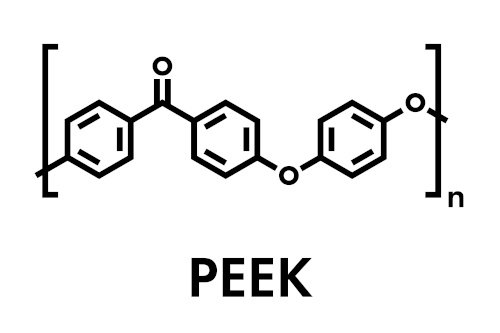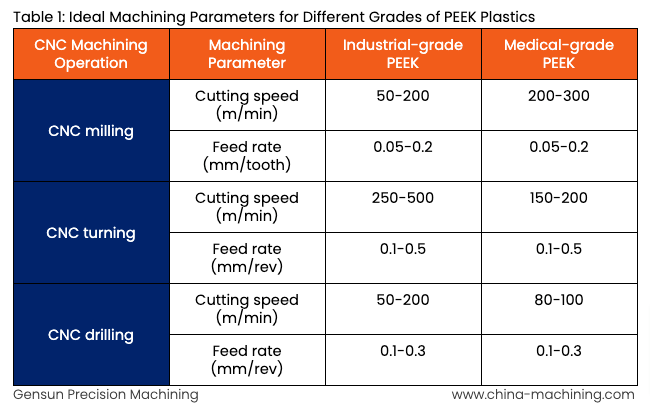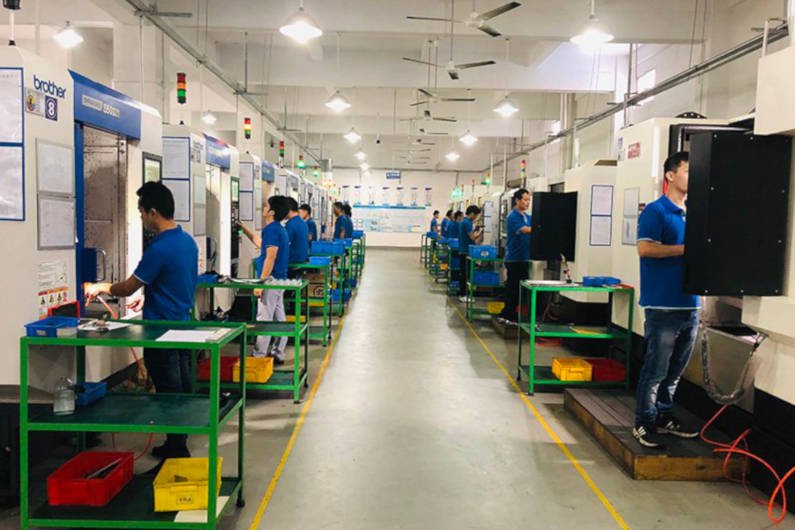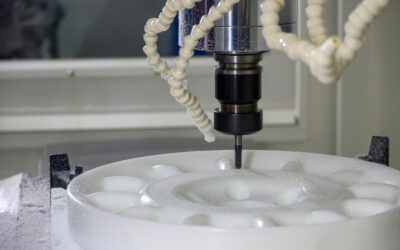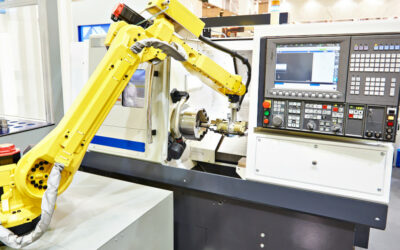Polyether ether ketone (also known as PEEK) is a popular thermoplastic polymer used in a broad range of industries, including medical, automotive, chemical, and energy industries.
However, given that PEEK is one of the most utilized plastics in CNC part design, you might assume that nobody makes the mistake of fabricating low-quality and unusable PEEK parts. But you’d be wrong: there’s more to PEEK machining than meets the eye. For instance, PEEK doesn’t dissipate heat so well, making it prone to heat-related cracks during cutting operations. In addition, PEEK requires special tooling and coolants, especially when fabricated for the medical industry.
This article presents five essential tips for machining PEEK plastics. It will serve as a guide to get your PEEK product done right the first time. But before we get right into it, it’s essential that you first understand the two common grades of PEEK.
Two Common Grades of PEEK
PEEK comes in two common grades:
- Industrial-grade PEEK
- Medical-grade PEEK
The industrial-grade PEEK is a strong, abrasion-resistant thermoplastic with a low coefficient of friction and high impact strength. Components made from industrial-grade PEEK are used in the aerospace, automotive, chemical, electronics, and energy industries. Some industrial-grade PEEK plastics are reinforced with carbon fiber, which offers higher strength and abrasion resistance than conventional PEEK plastics.
The medical-grade PEEK possesses all of the mechanical properties of industrial-grade PEEK. However, in addition to all of these properties, medical-grade PEEK plastics are also chemical resistant and biocompatibleㅡwhich means they don’t have harmful effects on the human body. This makes them especially useful in custom medical implants, such as articulating joints.
5 PEEK Machining Tips
#1 Anneal PEEK Plastics Before Machining
PEEK plastics typically come in rods, plates, or injection molded blanks of various sizes. But before you take the plunge with machining these parts, you must relieve built-up stress through annealingㅡwhich is a heat treatment process that involves heating the plastic to a predetermined temperature, holding it for a certain period, and then cooling to room temperature.
Annealing increases the level of crystallinity and decreases built-up internal stresses of PEEK parts, preventing the likelihood of surface cracks during CNC cutting operations. One thing to note, though: you might have to perform an additional annealing process if you plan to subject your PEEK workpiece to long stretches of machining time.
#2 Use the Carbide and Polycrystalline Tooling
All PEEK grades are abrasive to cutting toolsㅡwhich means they can cause damage, wear, or removal of tooling material during cutting operations. Therefore, we recommend that you use carbide tooling for short runs of machining common PEEK grades. However, for PEEK grades reinforced with glass and carbon fiber, you might want to consider using polycrystalline (PCD) tooling, especially for long manufacturing runs.
#3 Use the Right Coolant
Although PEEK has a very high melting temperature, it still requires adequate cooling during processing to prevent deformation and cracking. Standard liquid coolants (petroleum-based) are ideal when cutting industrial-grade PEEK plastics. However, for medical-grade PEEK, you want to avoid using standard liquid coolants at all costs.
This is because standard liquid coolants affect the biocompatibility of medical-grade PEEK, making it unsuitable for fabricating medical components. At Gensun, we recommend that you cool your medical-grade PEEK plastic using compressed air or pure water.
#4 Use the Right Machining Parameters
To experience seamless manufacturing of PEEK parts, you want to ensure you use the correct machining parameters when performing drilling, milling, and turning operations. Table 1 presents the ideal range of cutting speed and feed rate for fabricating PEEK parts.
Learn more about feed rate vs. cutting speed.
#5 Avoid Contamination
Contamination is a serious concern when machining medical-grade PEEK plastics since it affects their biocompatibility. Therefore, you should use protective gloves when handling PEEK parts. Also, you want to keep machined medical-grade PEEK parts in closed containers to prevent contamination.
Learn more about Machining Medical Parts.
Fabricating PEEK Plastic Parts: Gensun Can Help
Now that you understand some of the challenges and tips for machining PEEK parts, you’d agree that these plastics require expertise and top-of-the-line manufacturing technologies.
Gensun Precision Machining is a leading provider of CNC machining services across Asia. We’ve been in business for nearly two decades, providing high-quality PEEK manufacturing services to customers across a wide range of industries. We have state-of-the-art CNC machines, and our team of engineers, machinists, and quality control experts works together to get your product done right.
Learn more about our CNC machining services.

